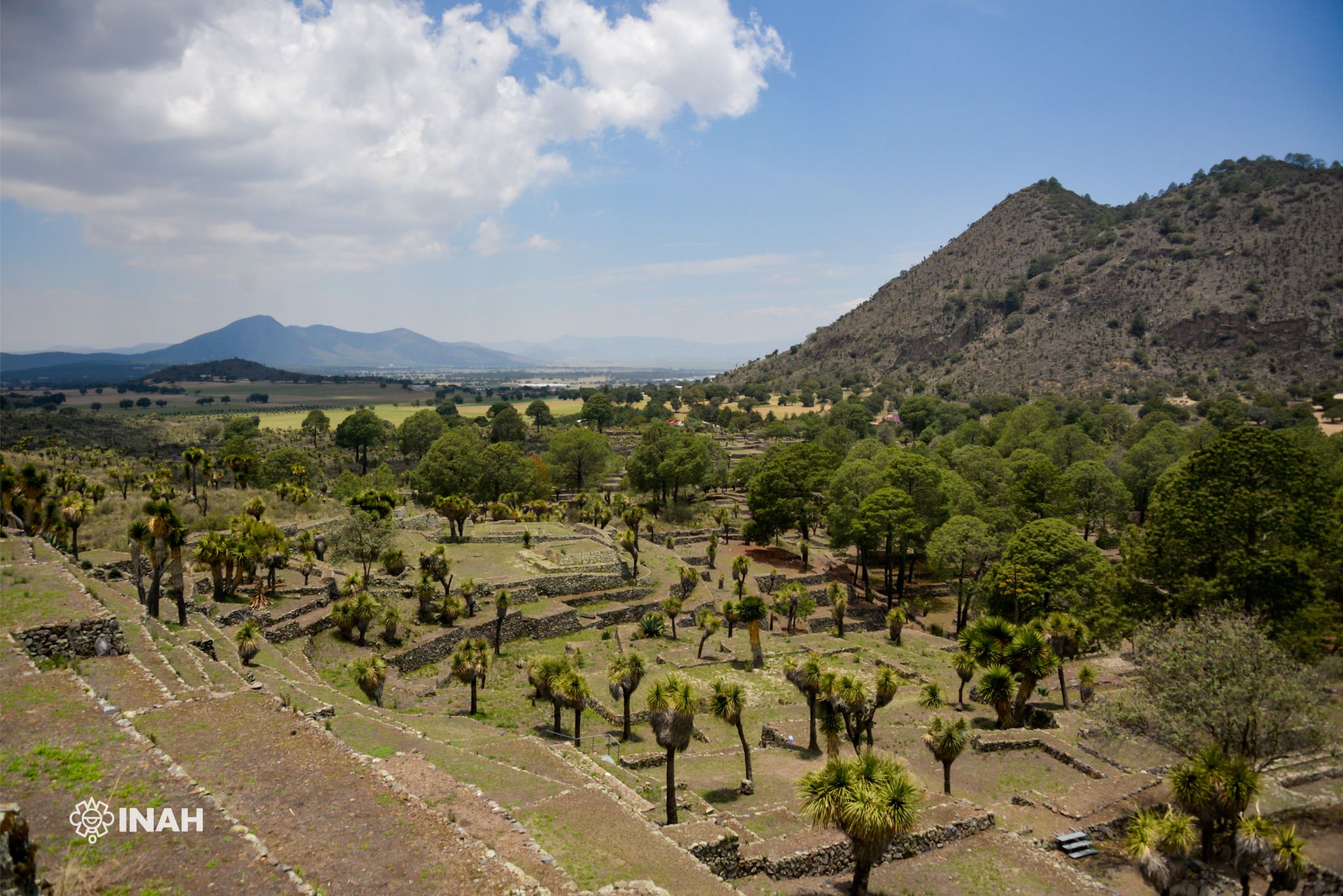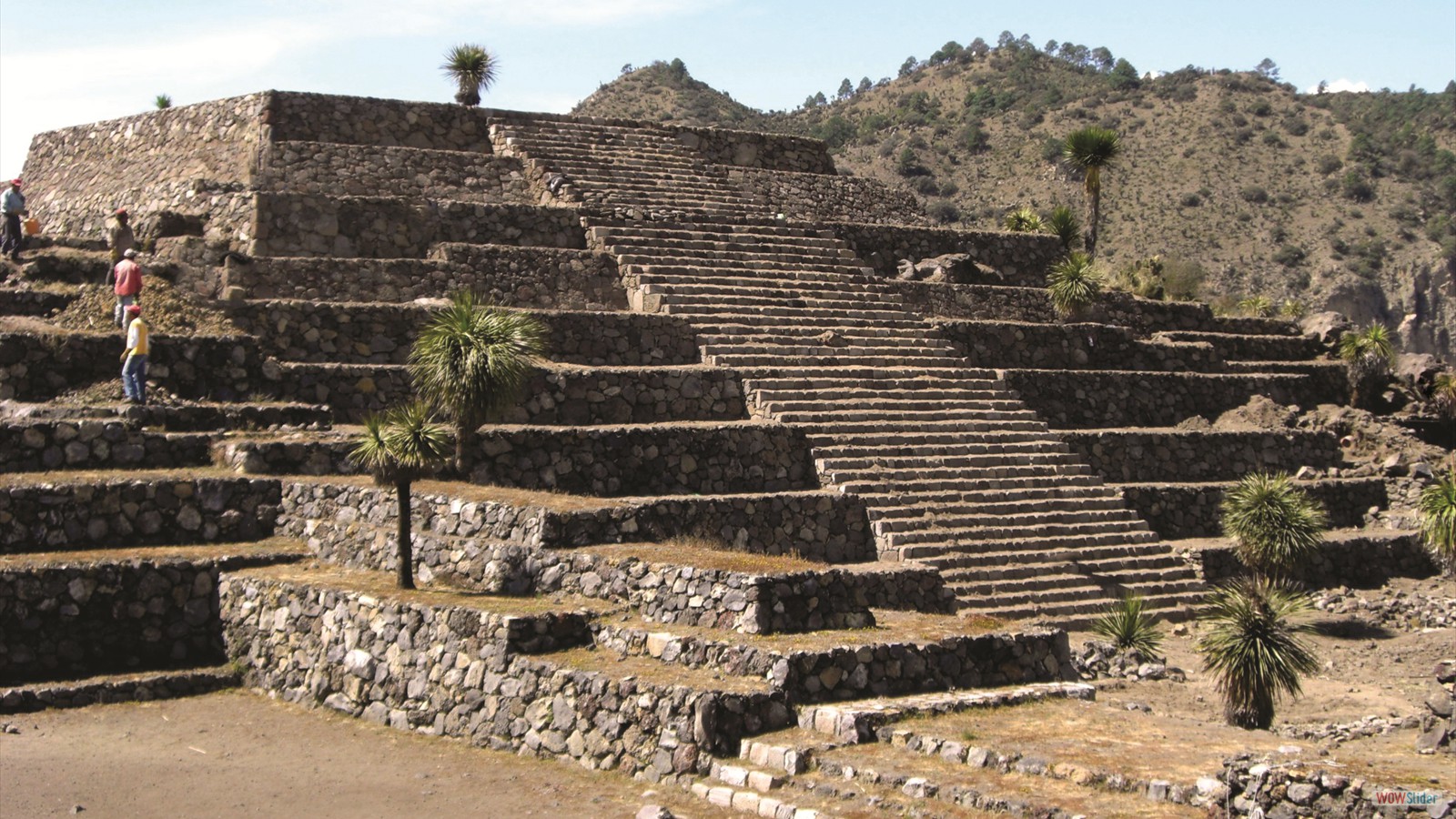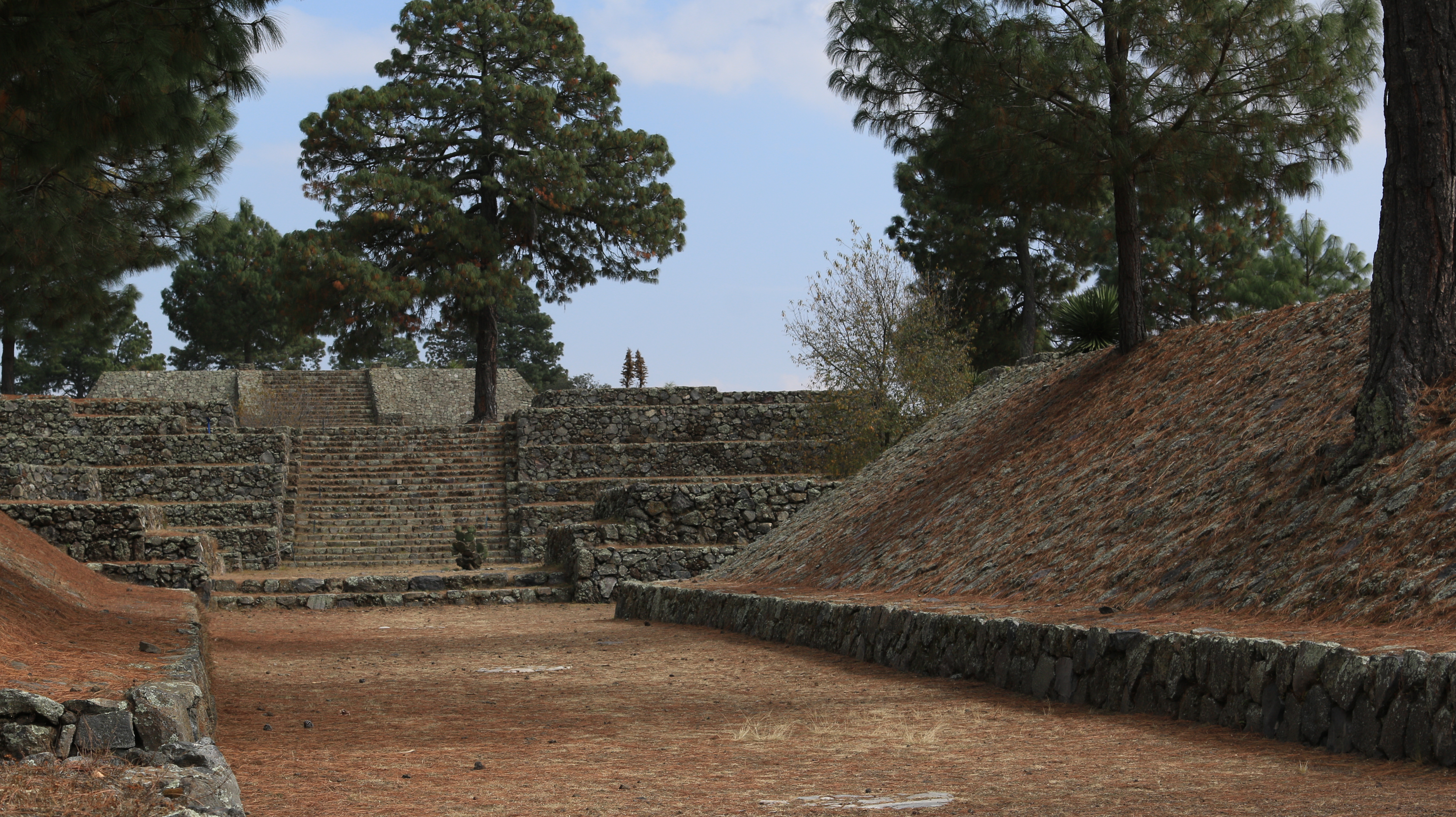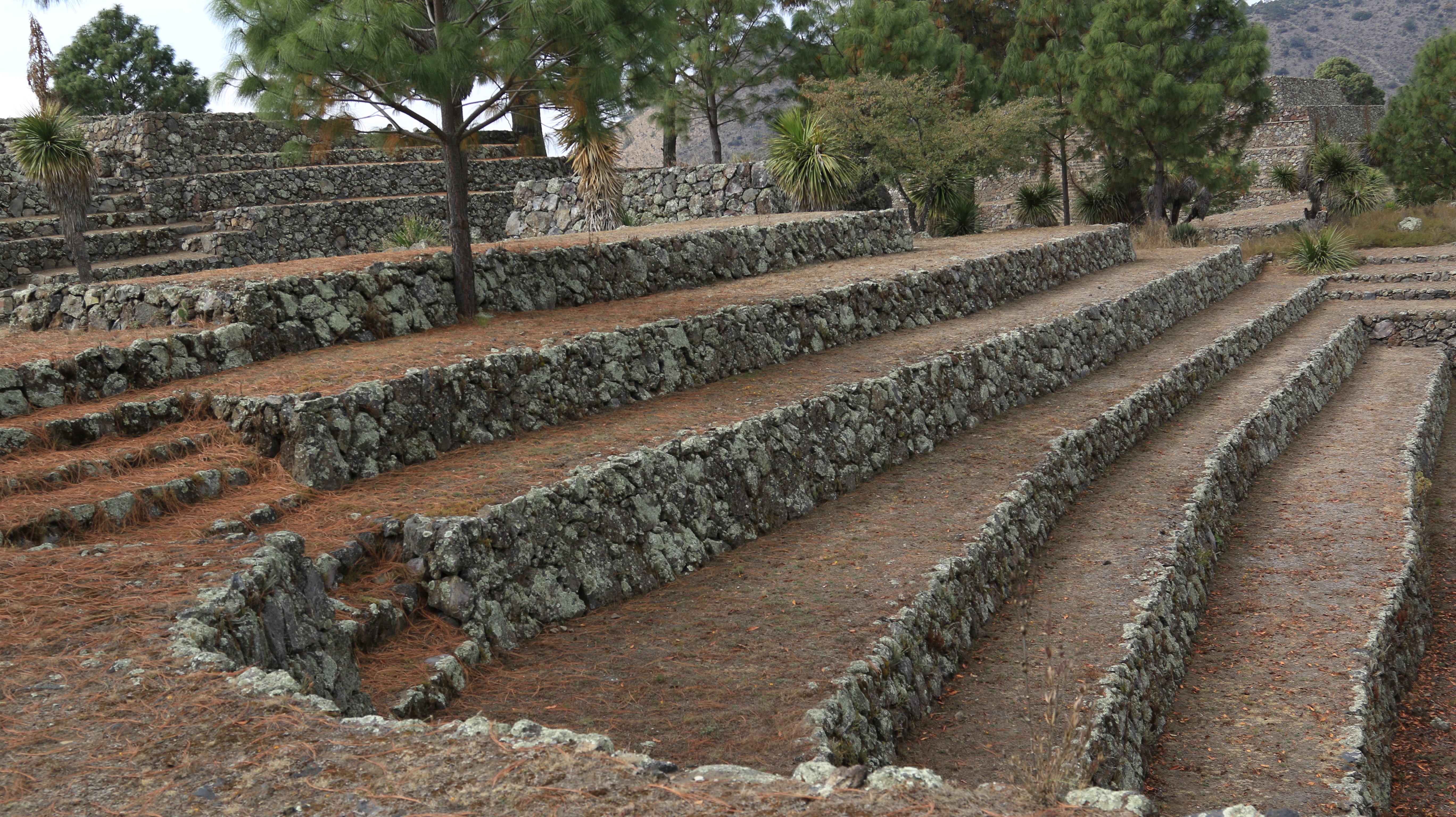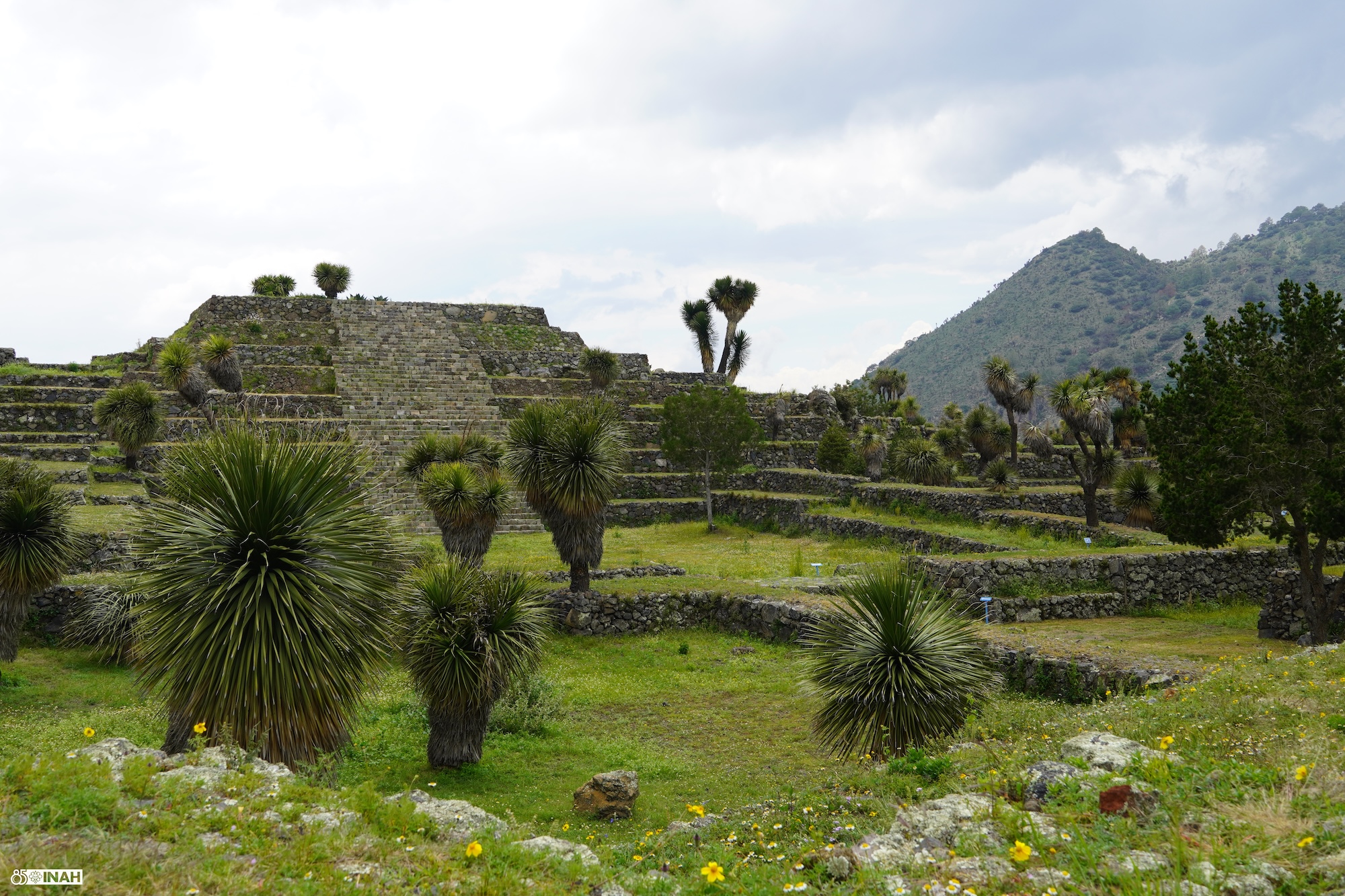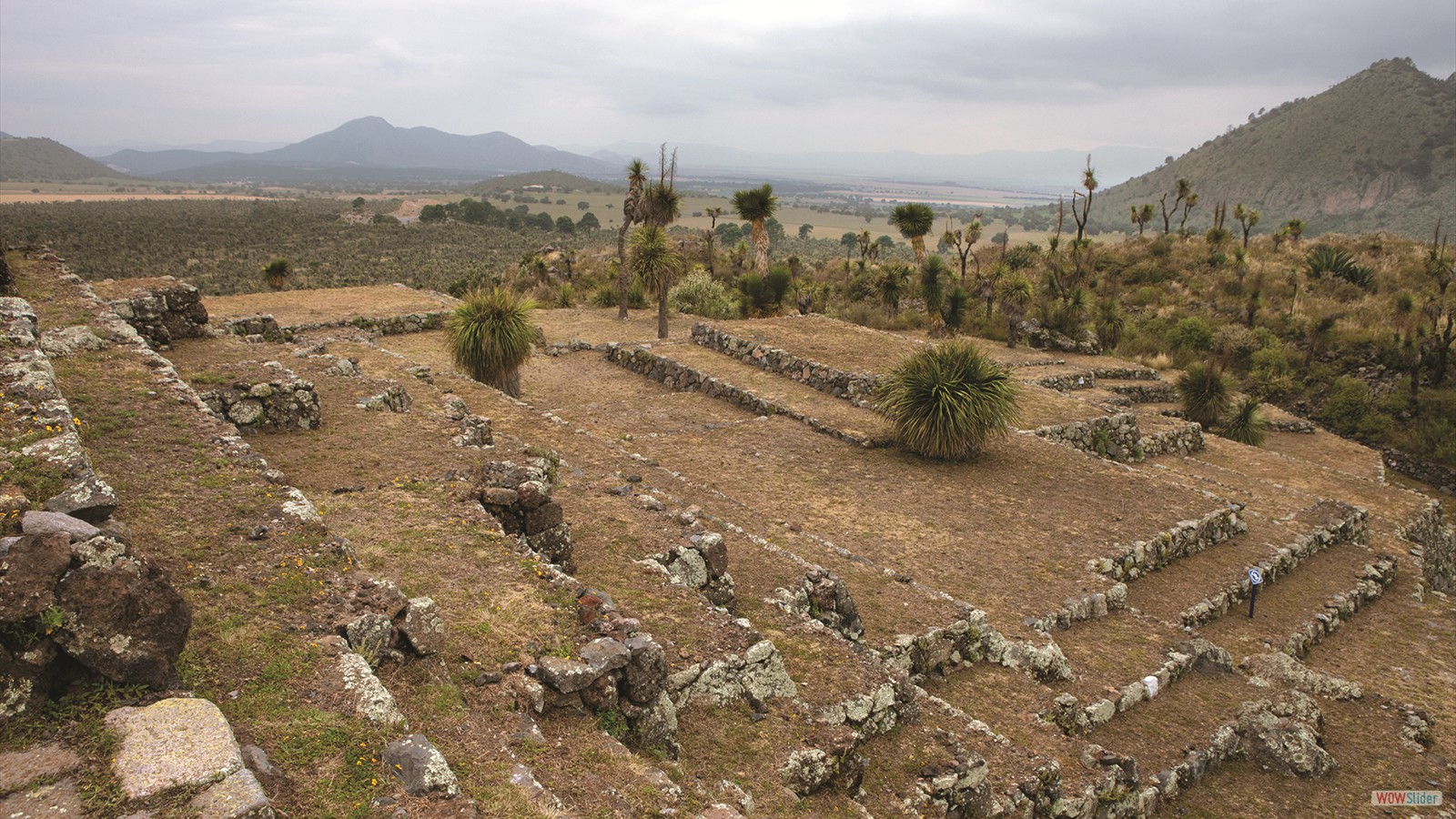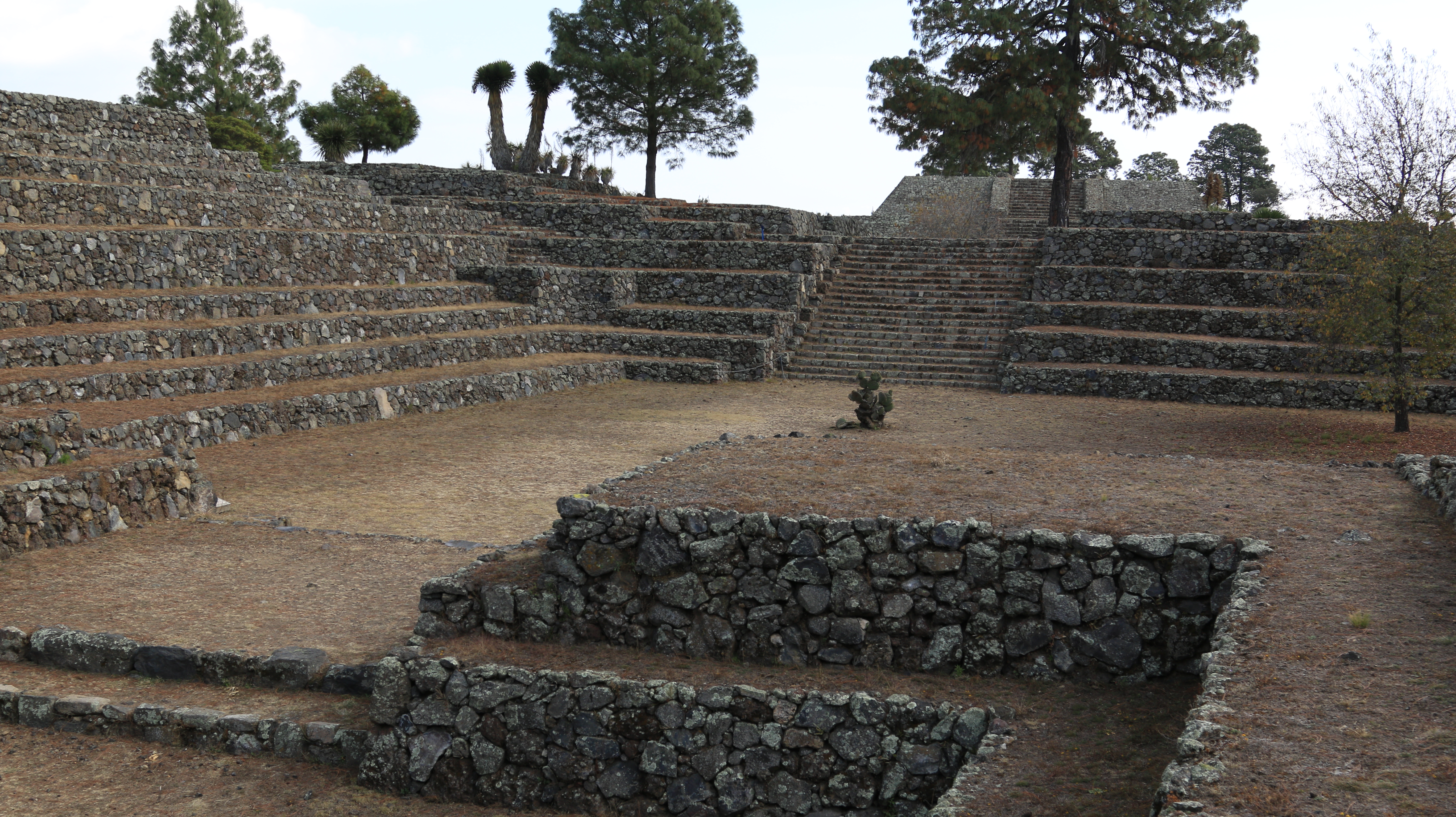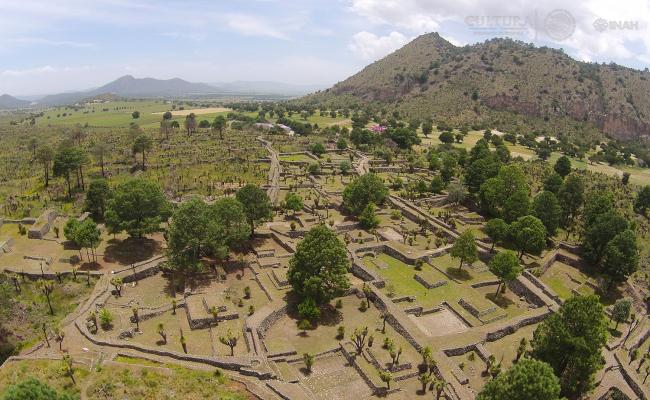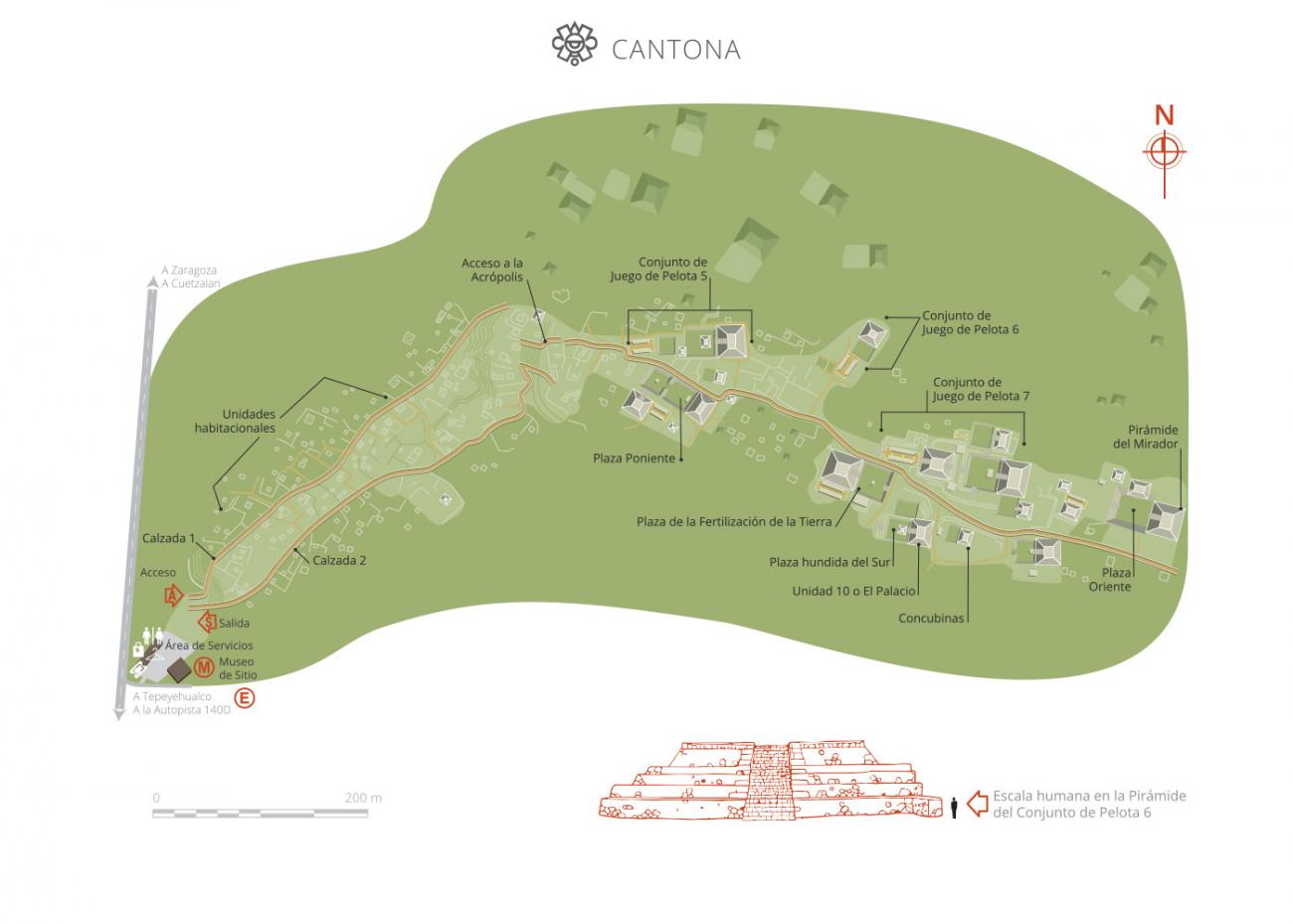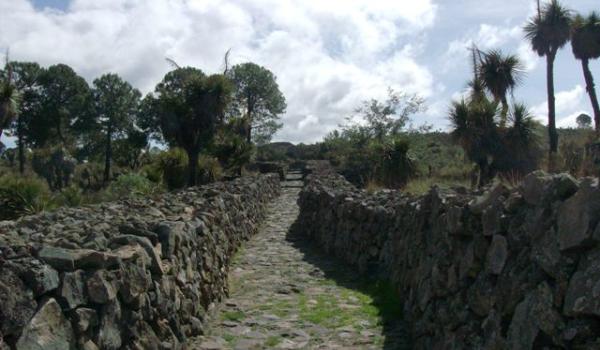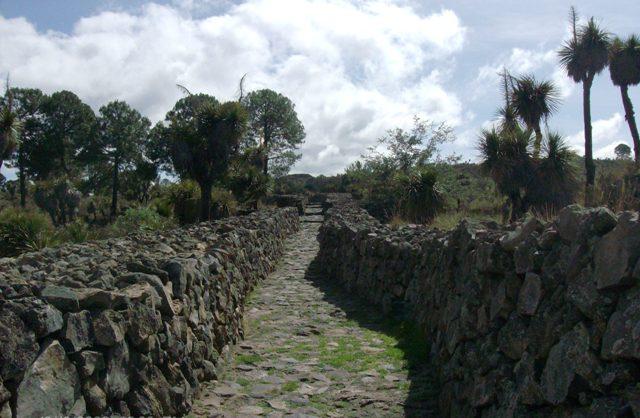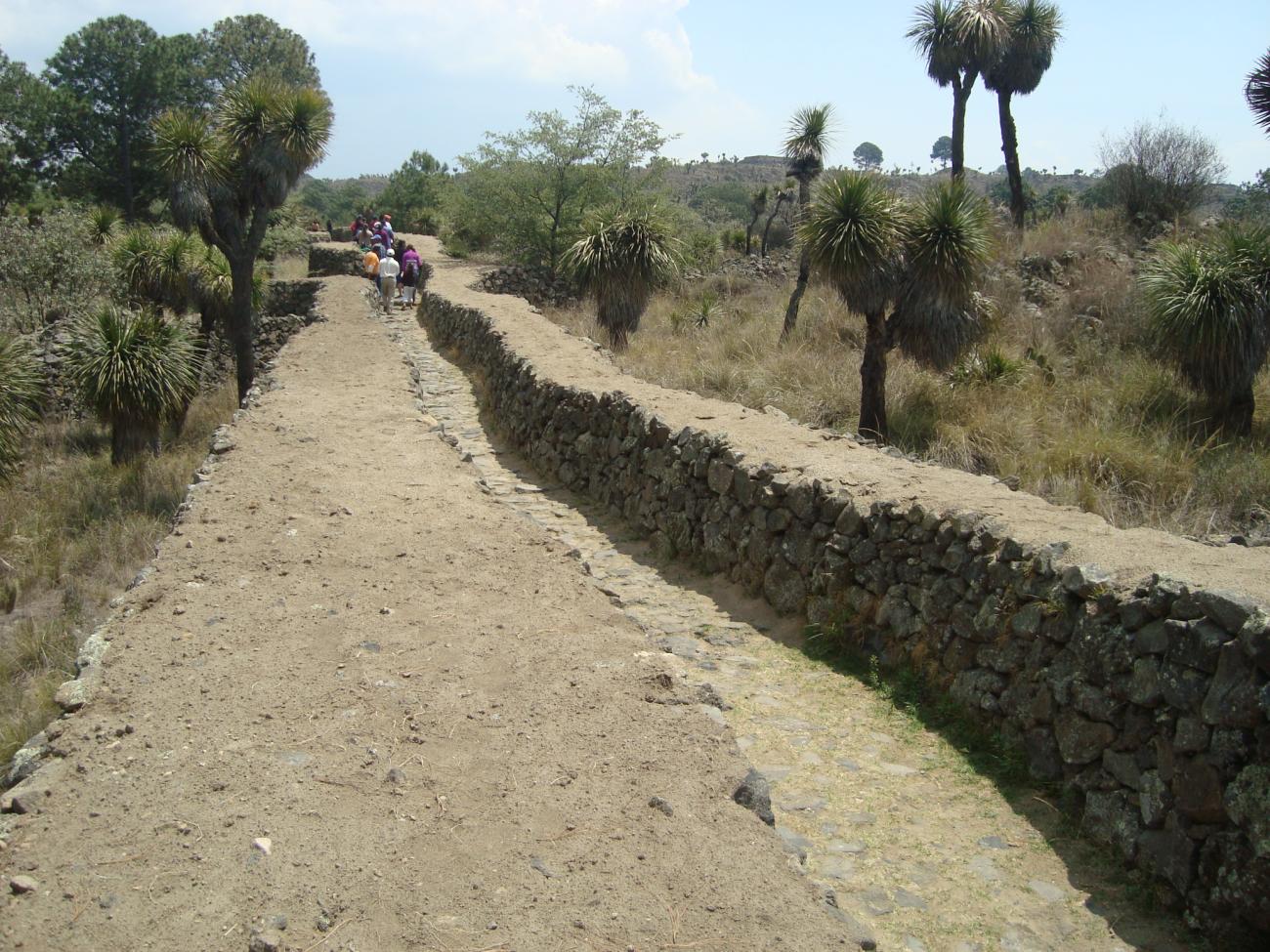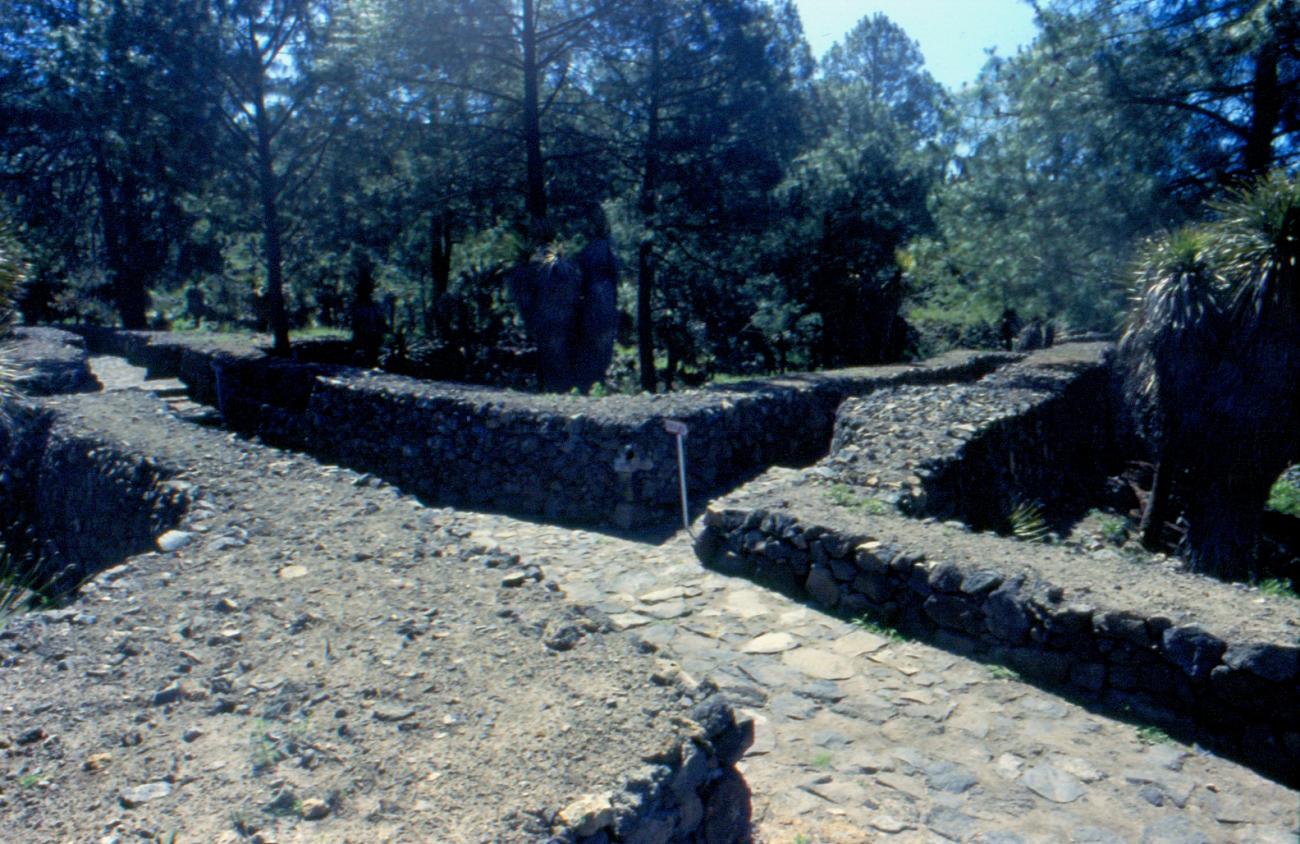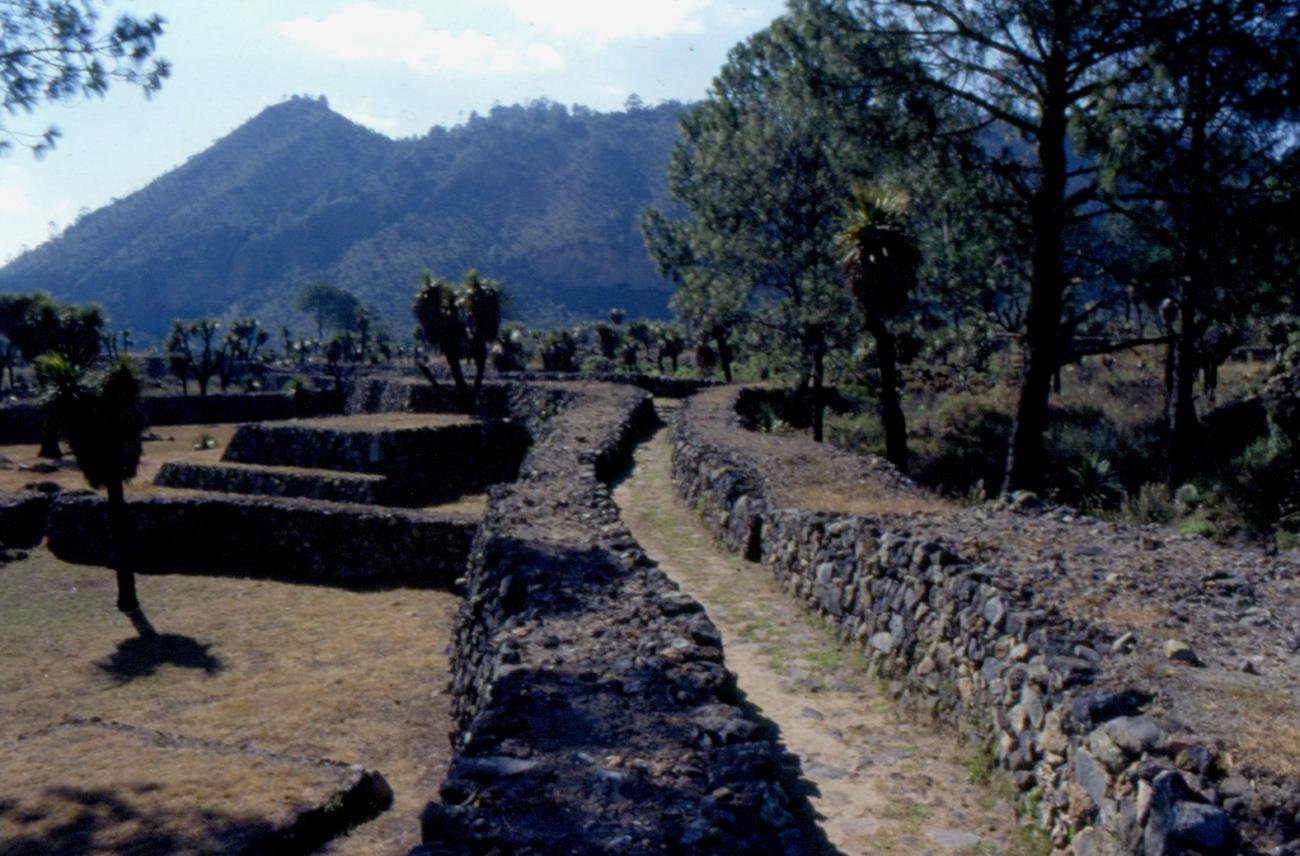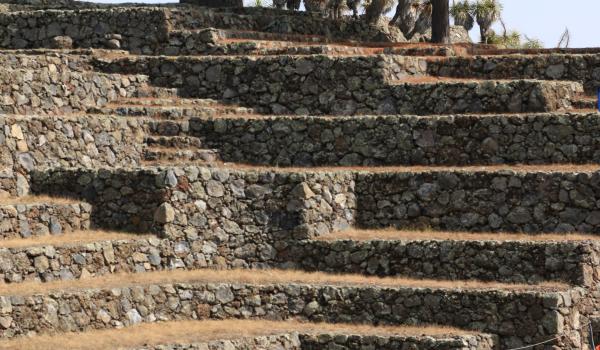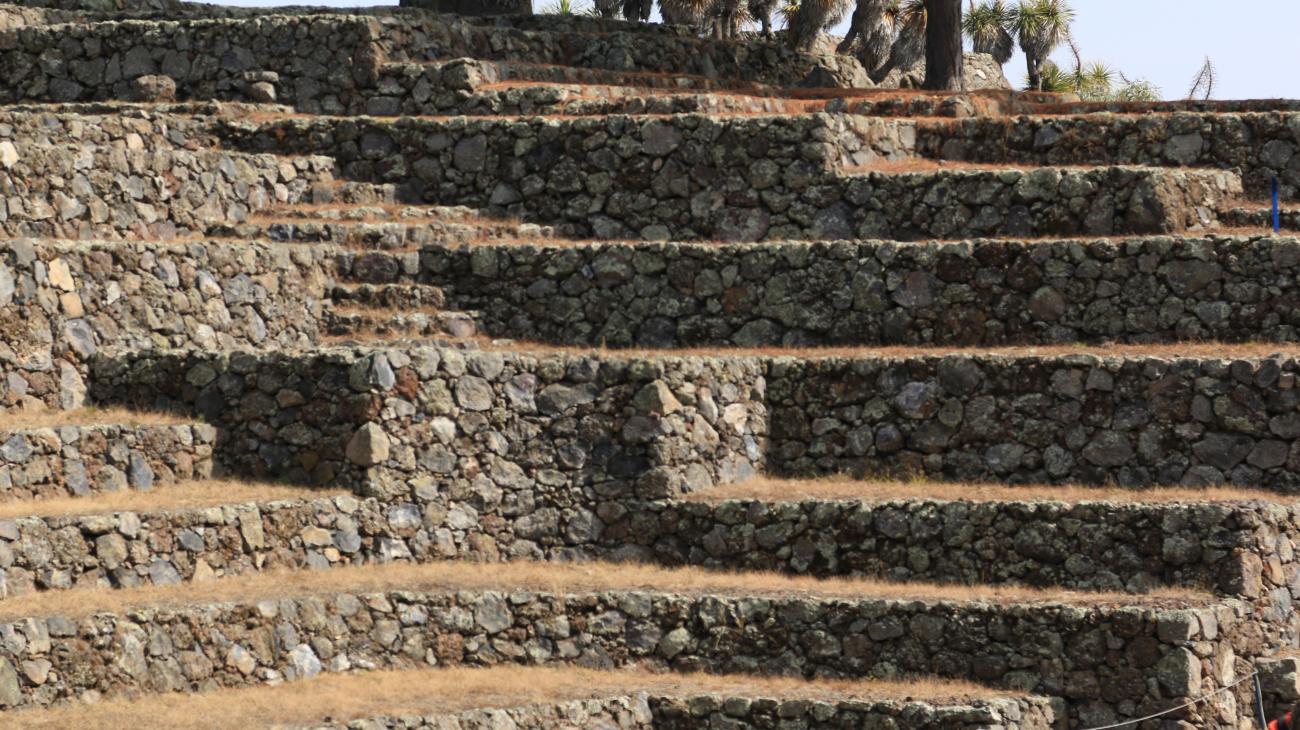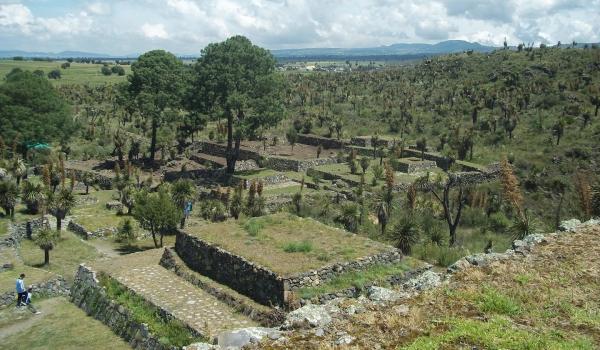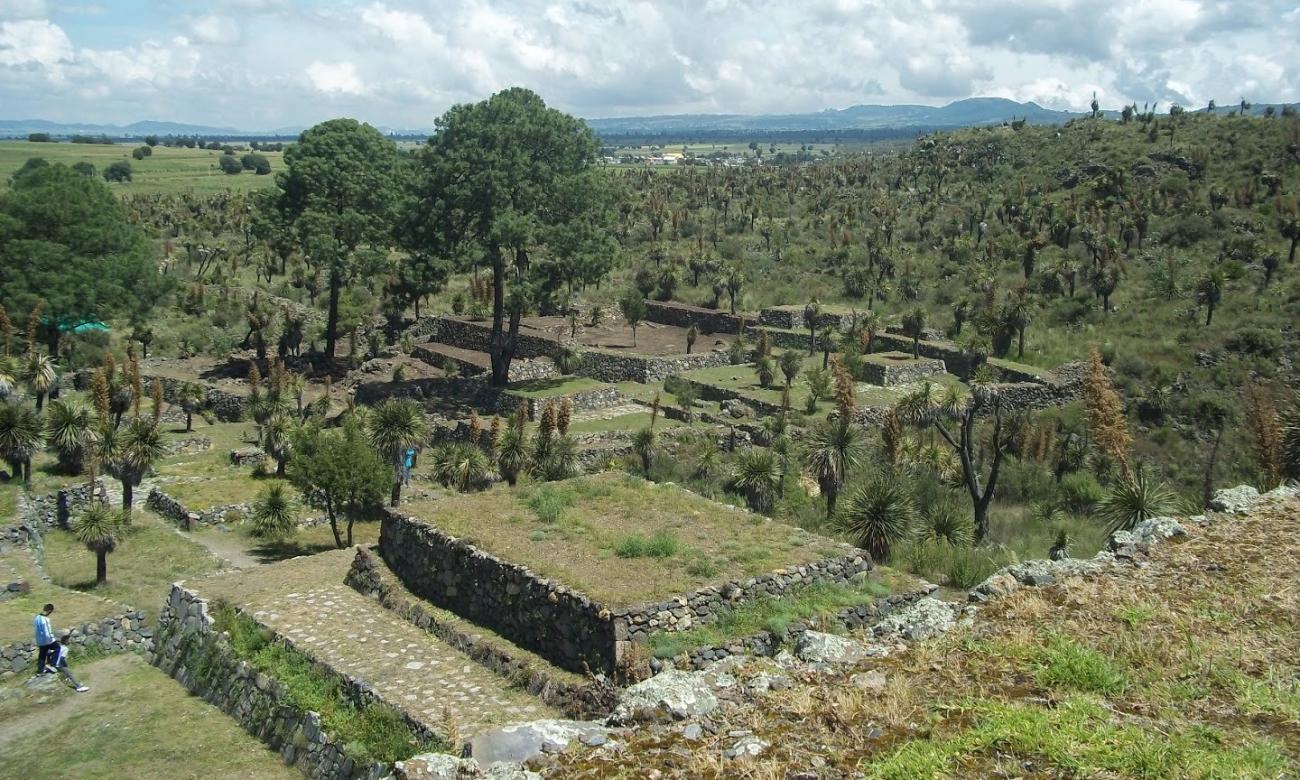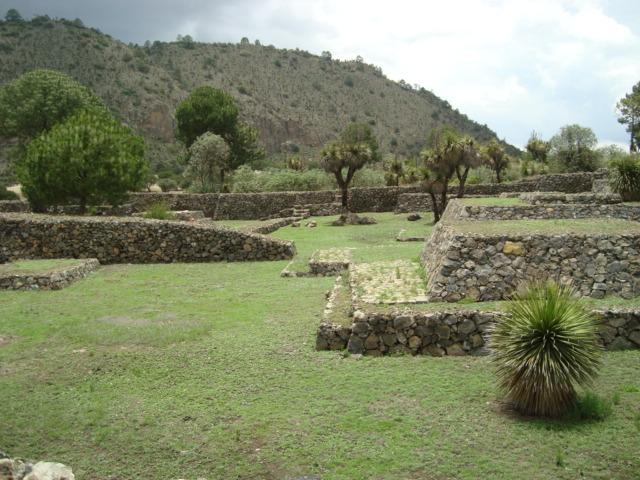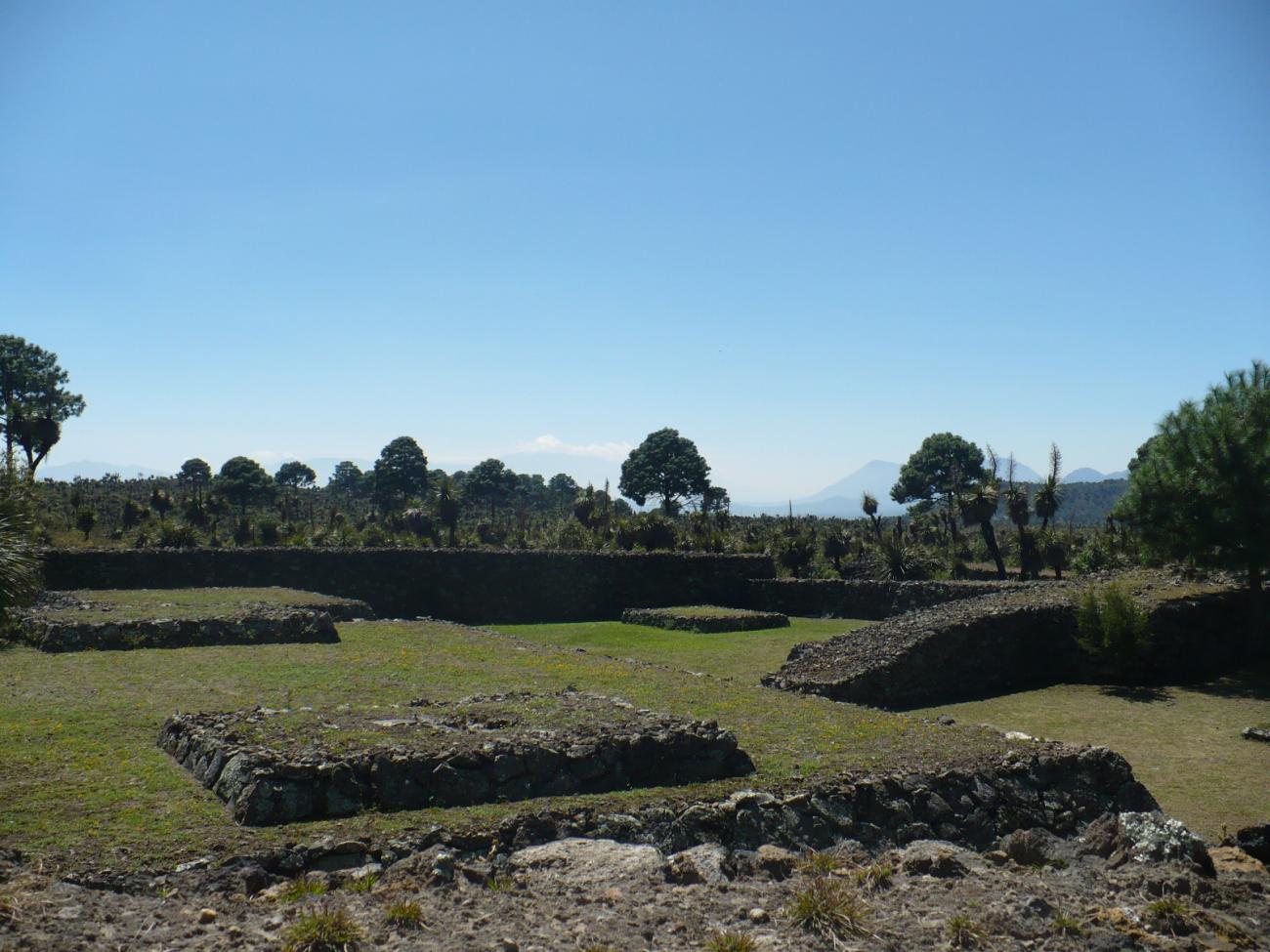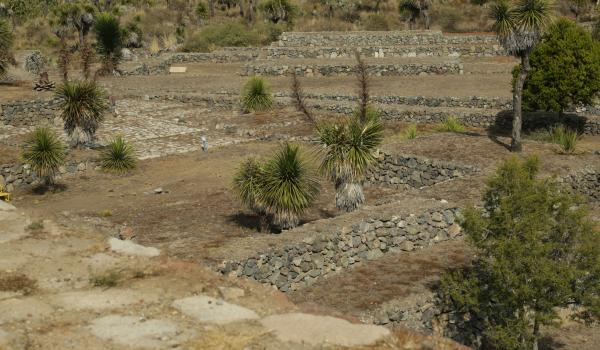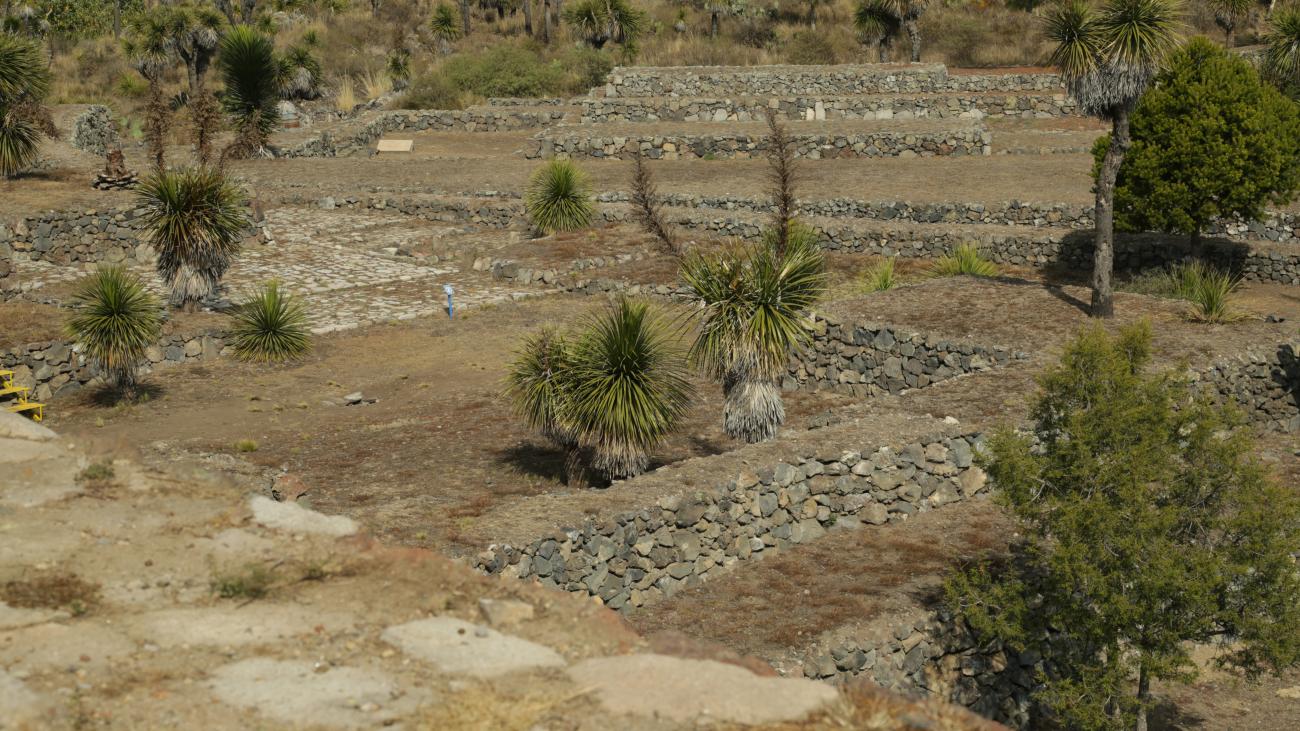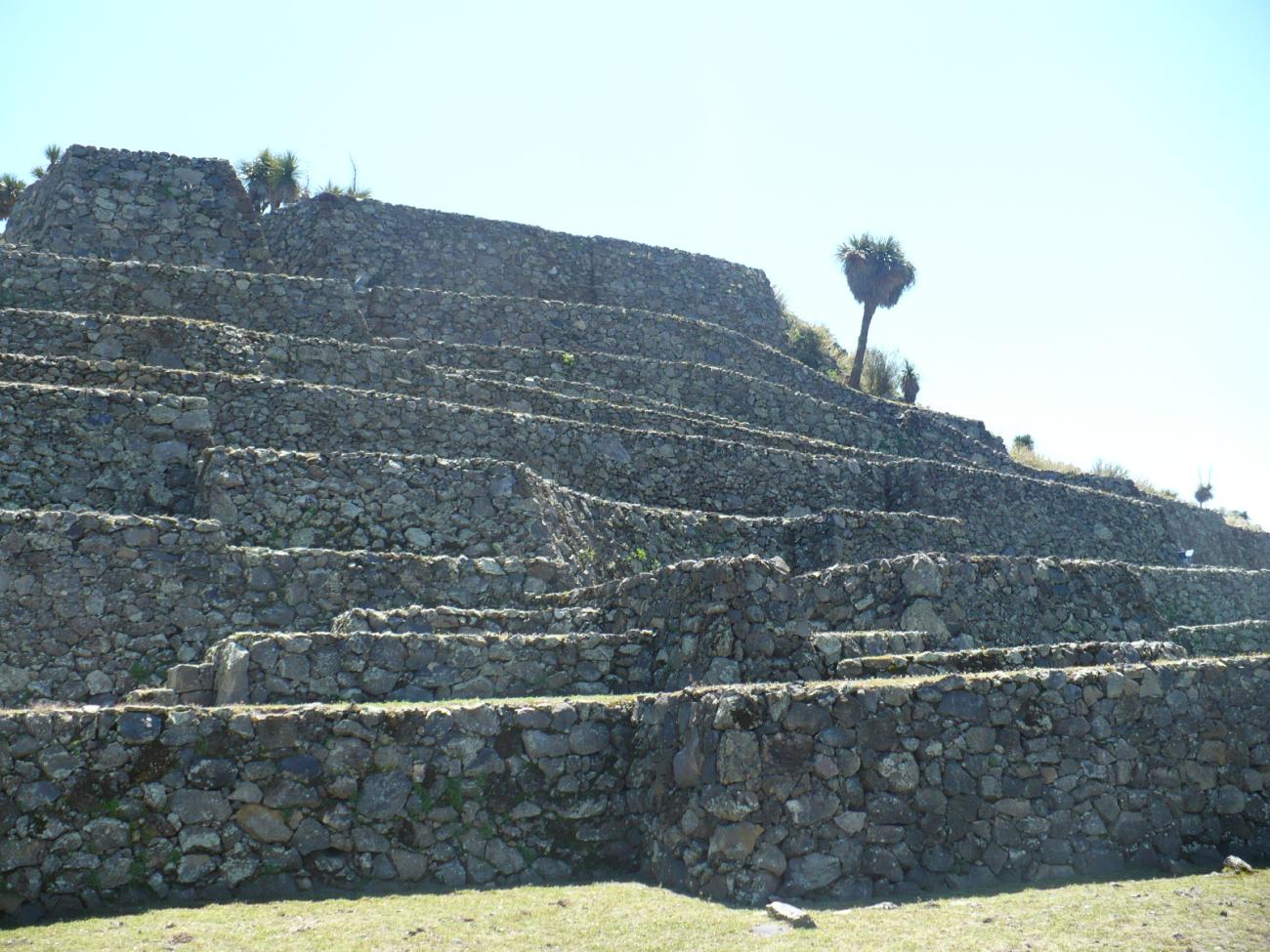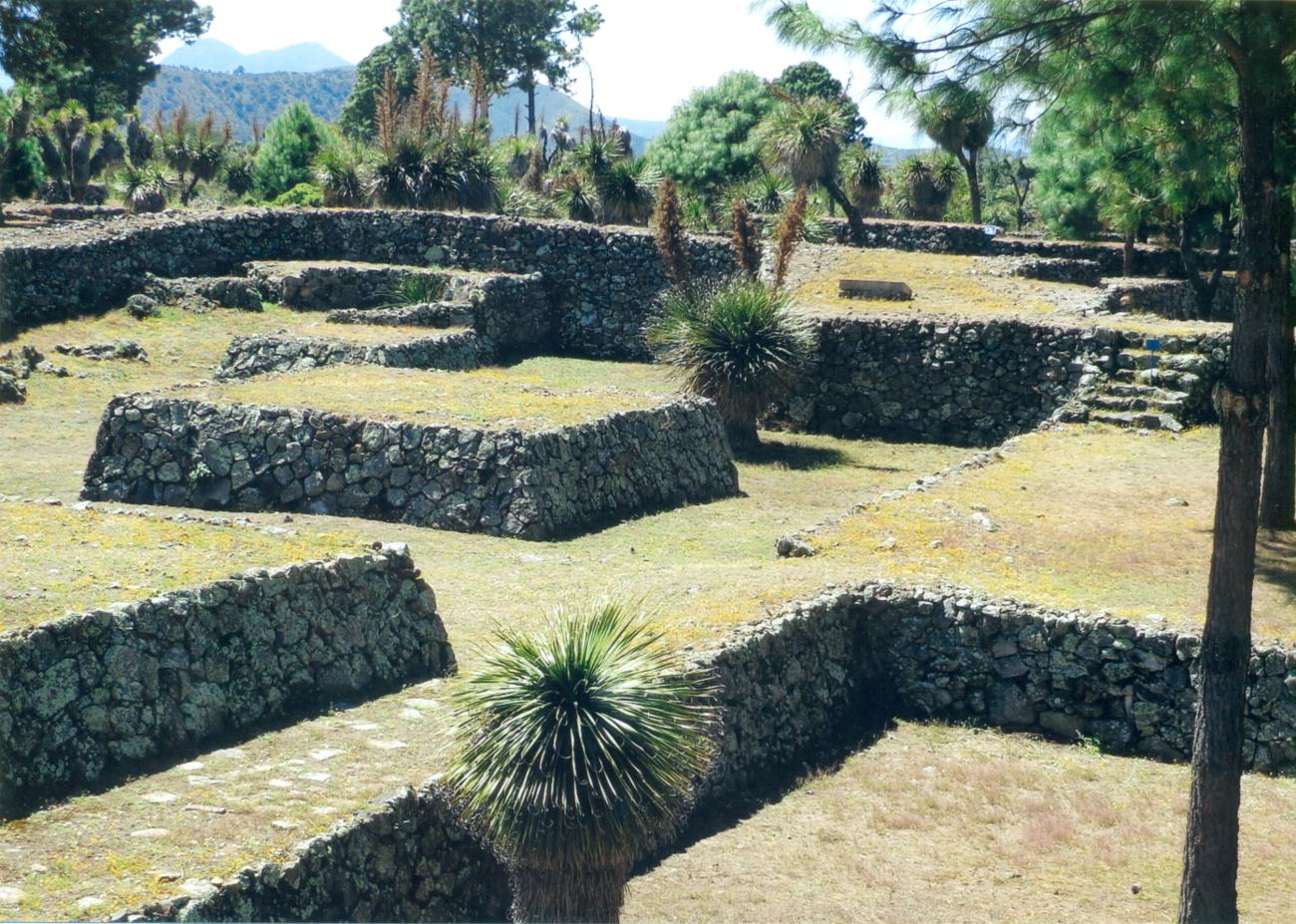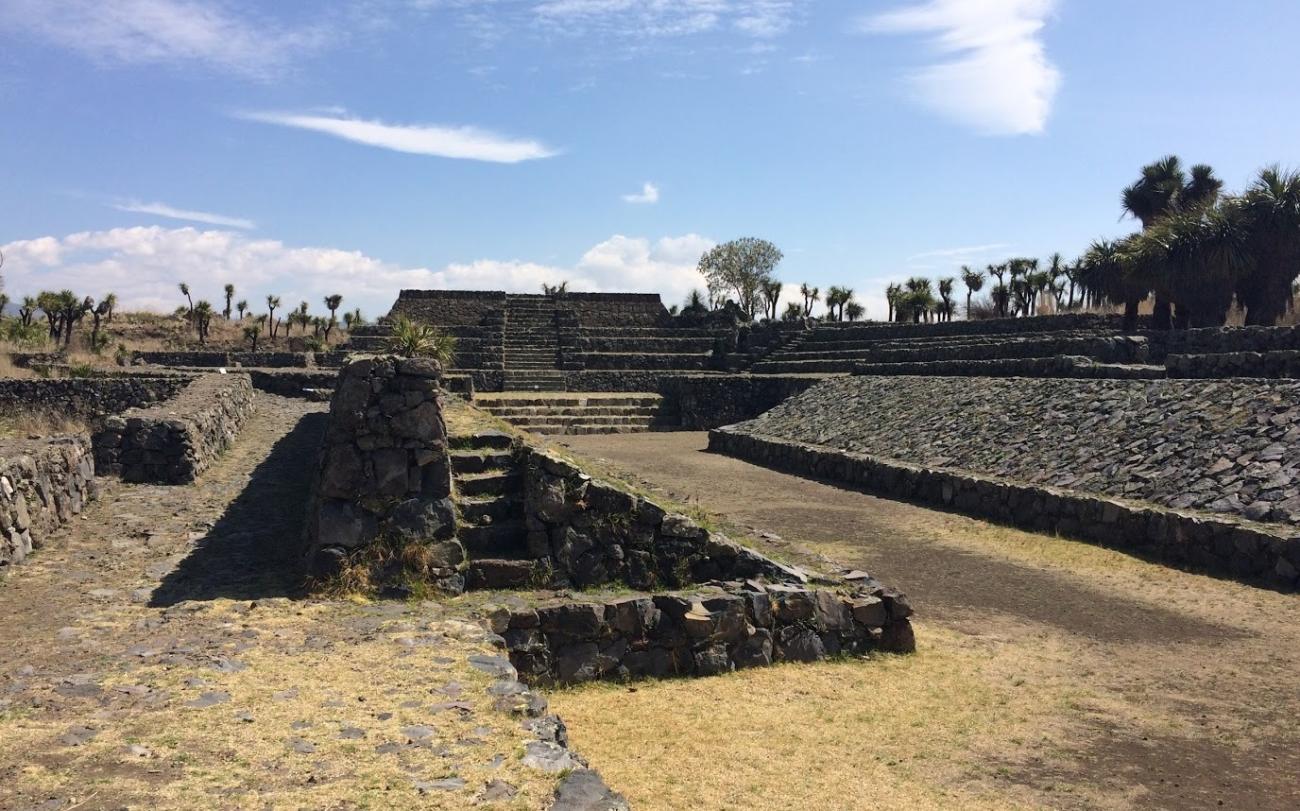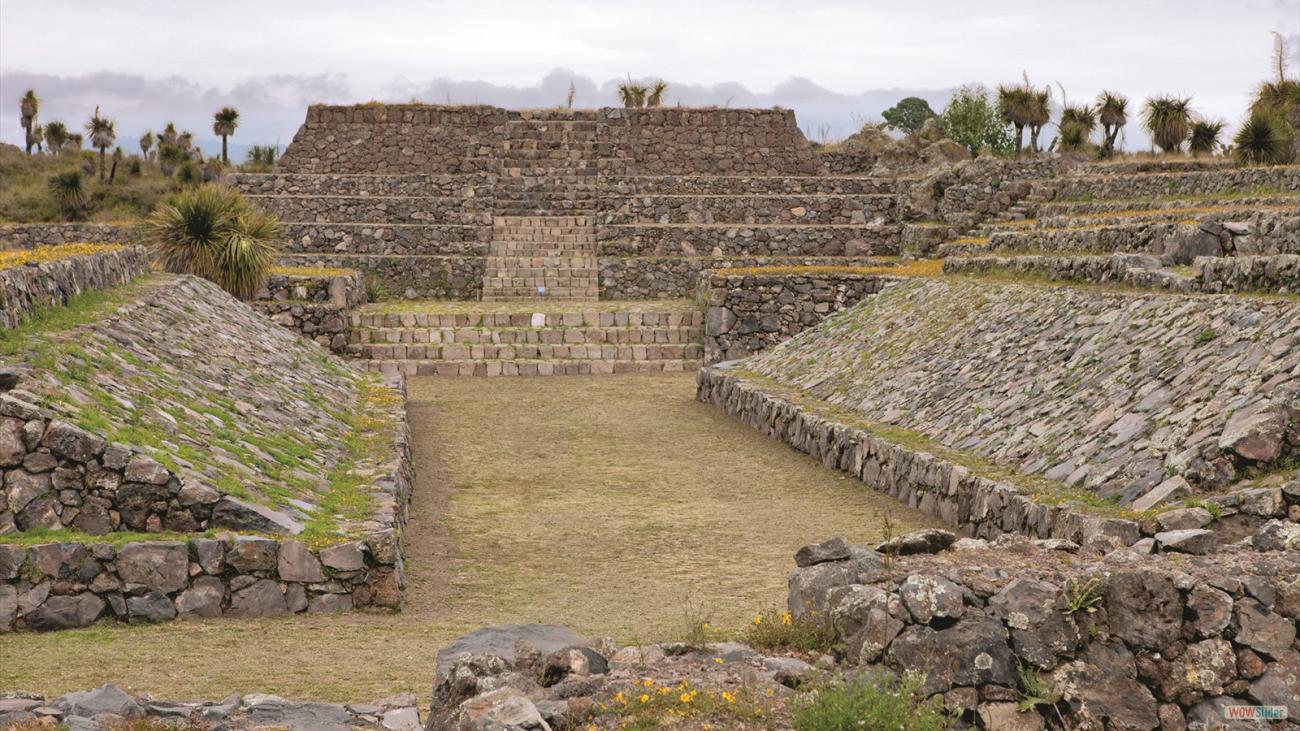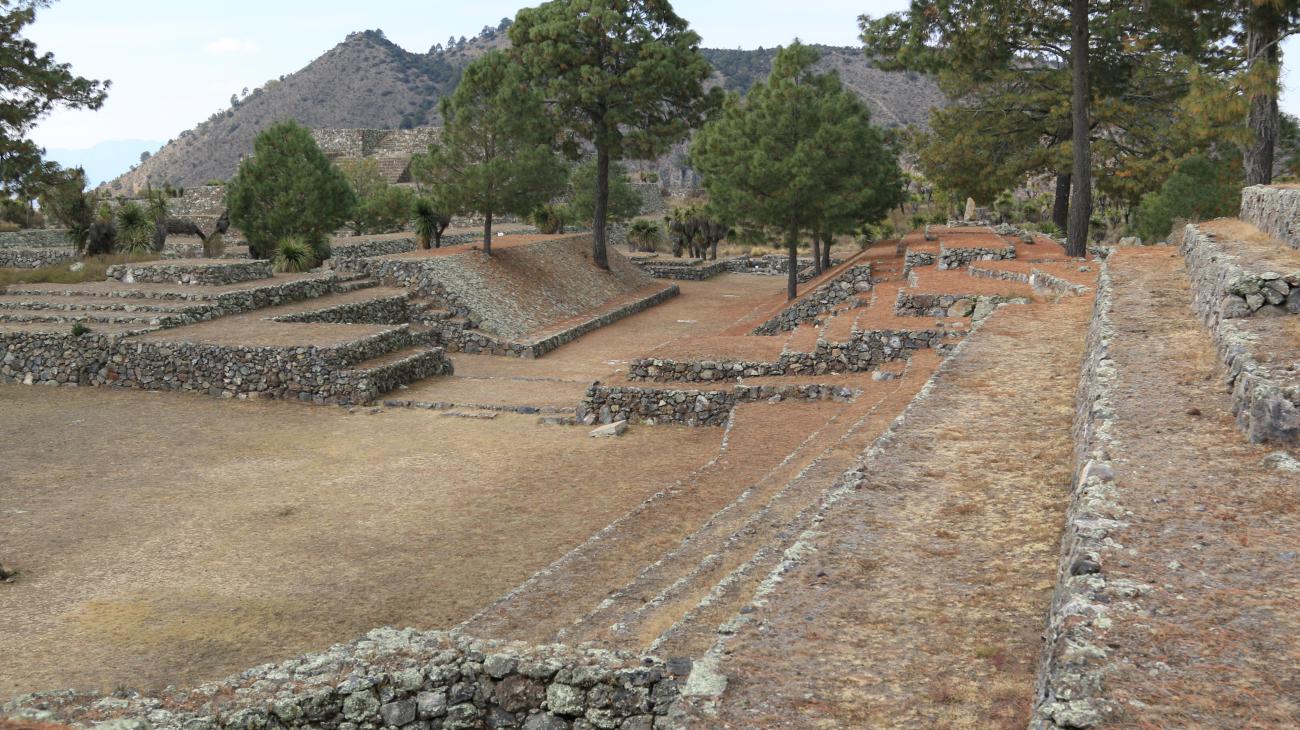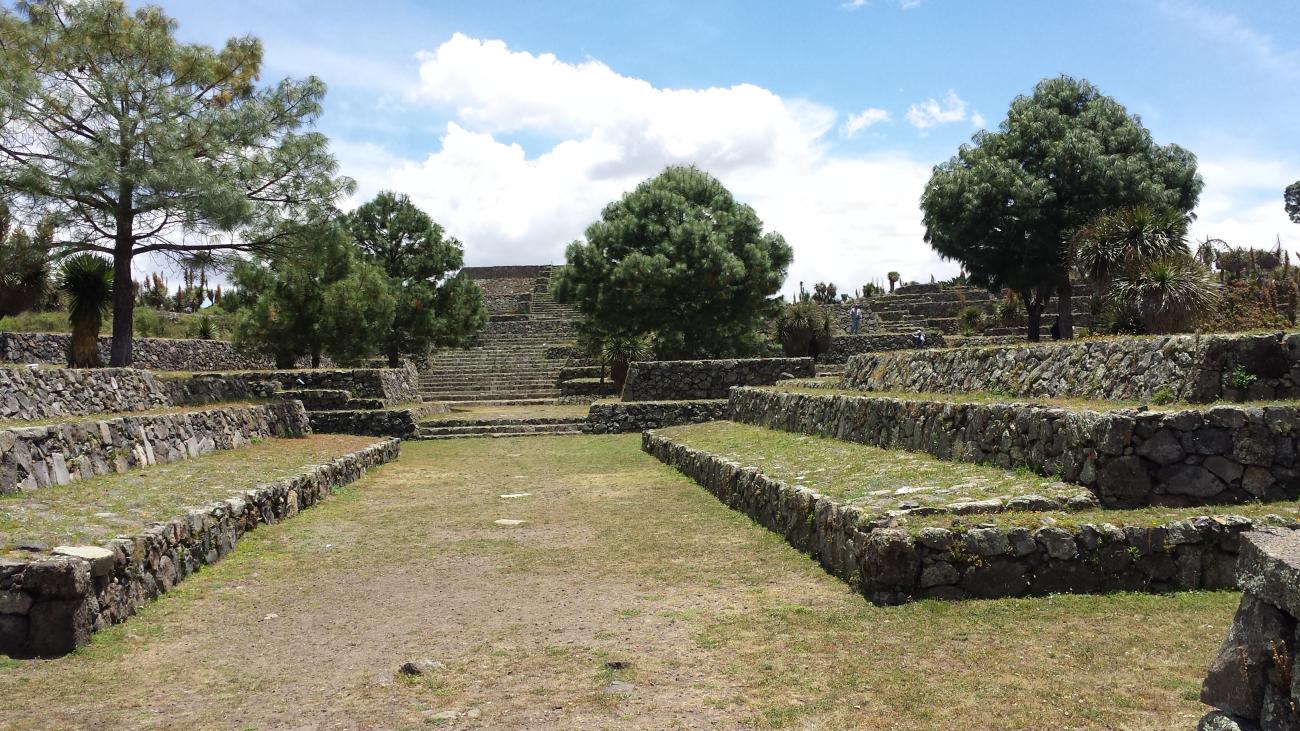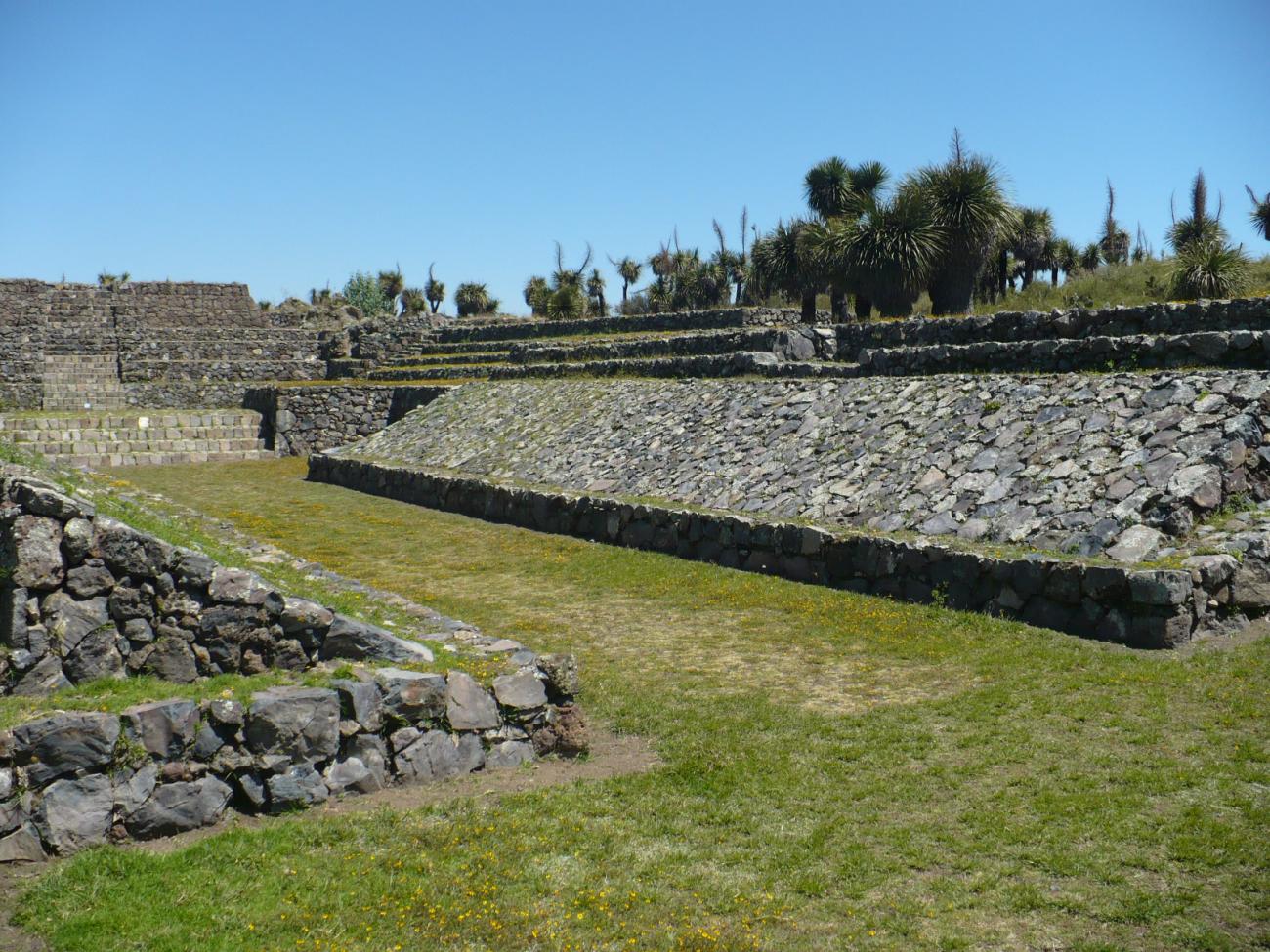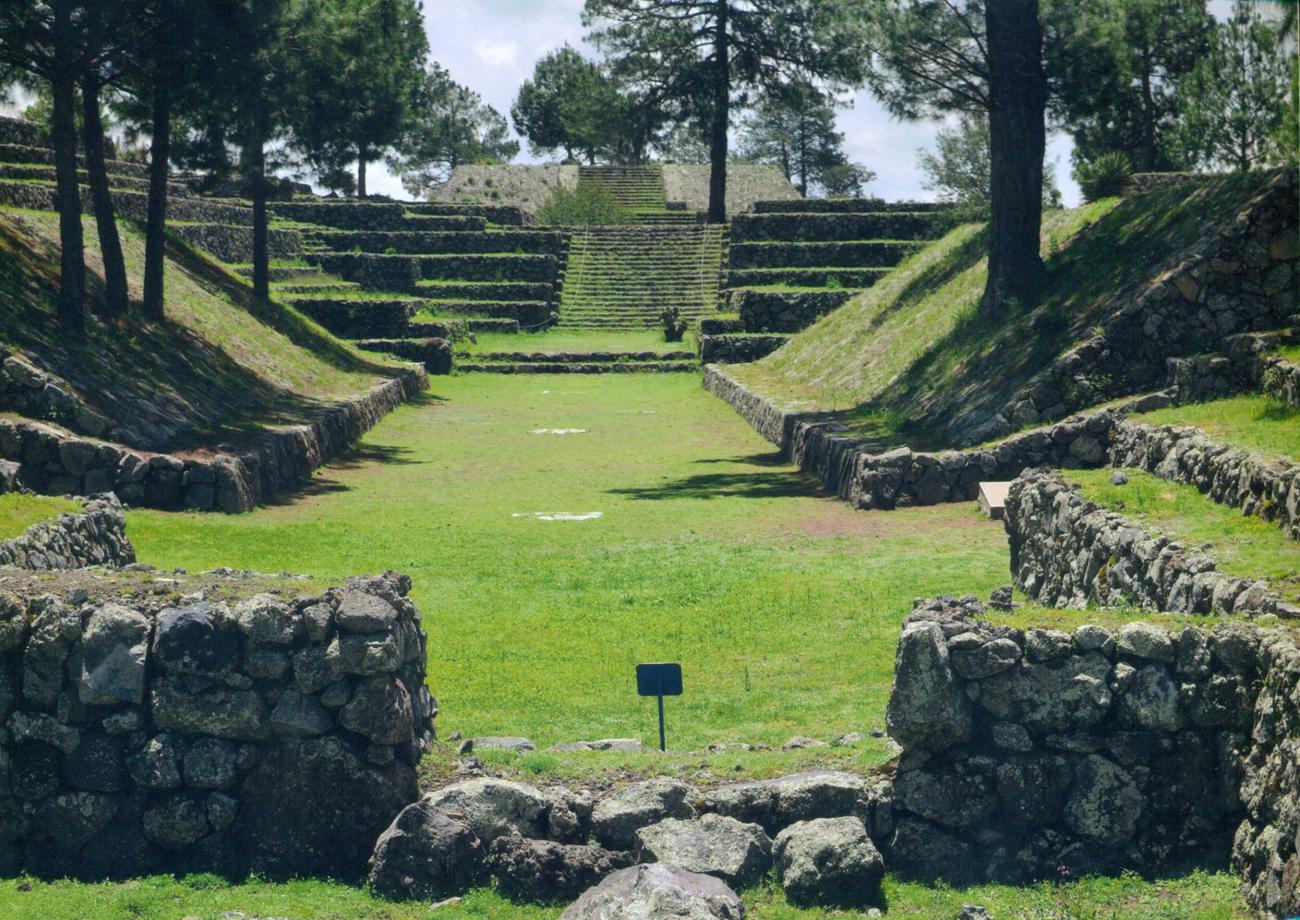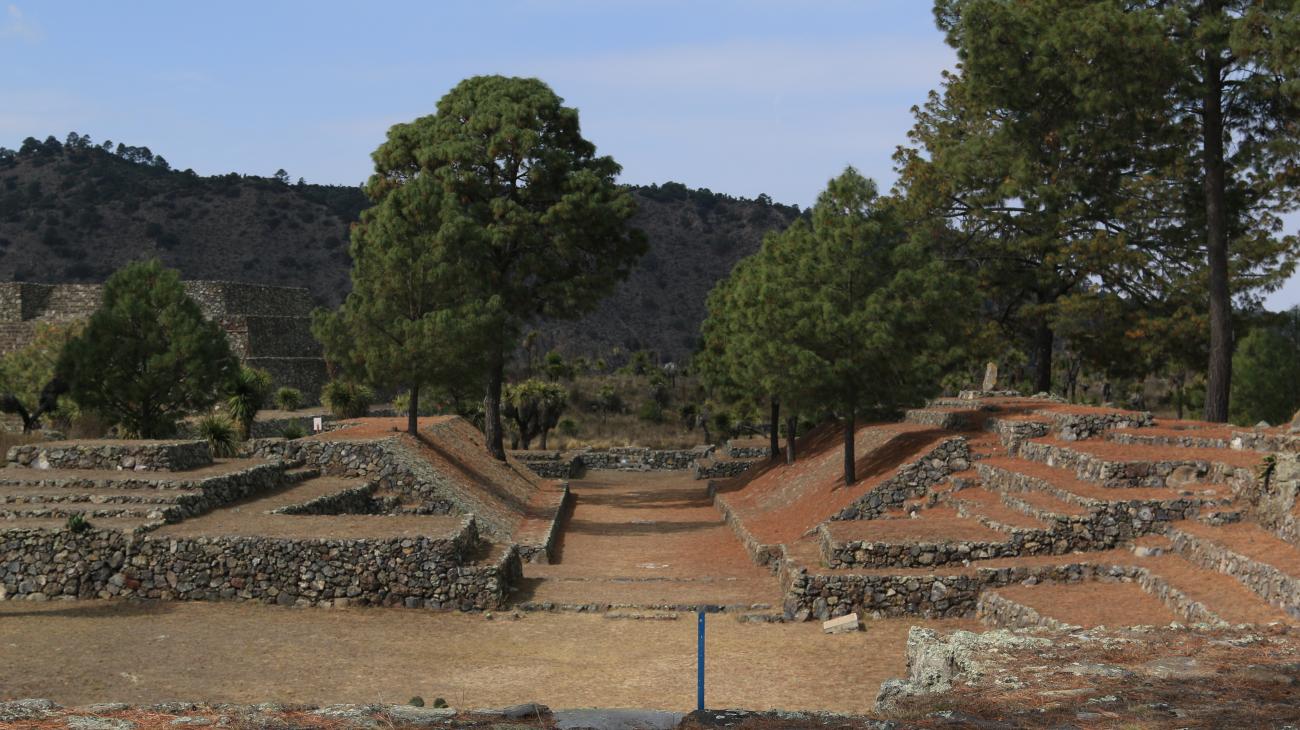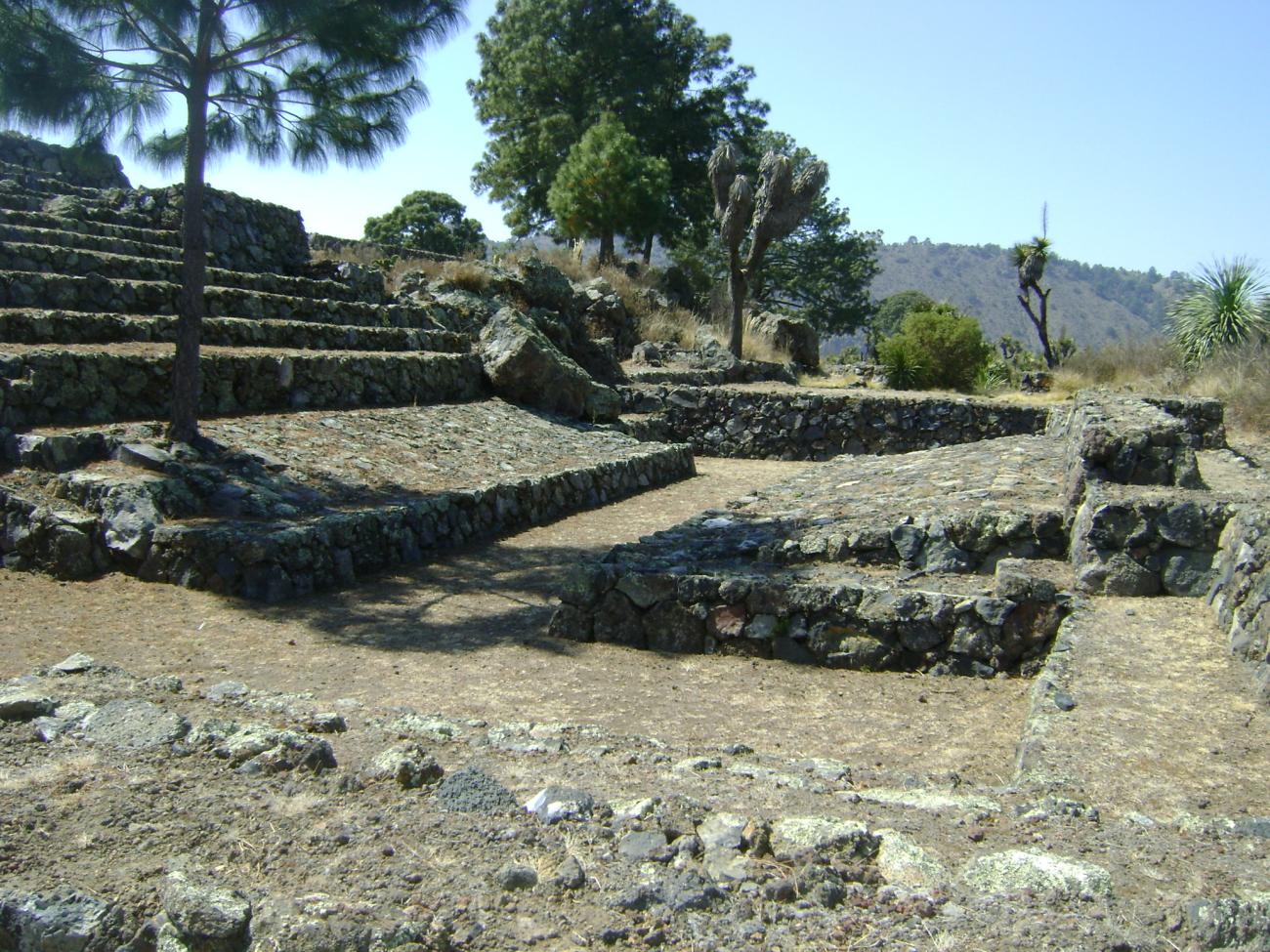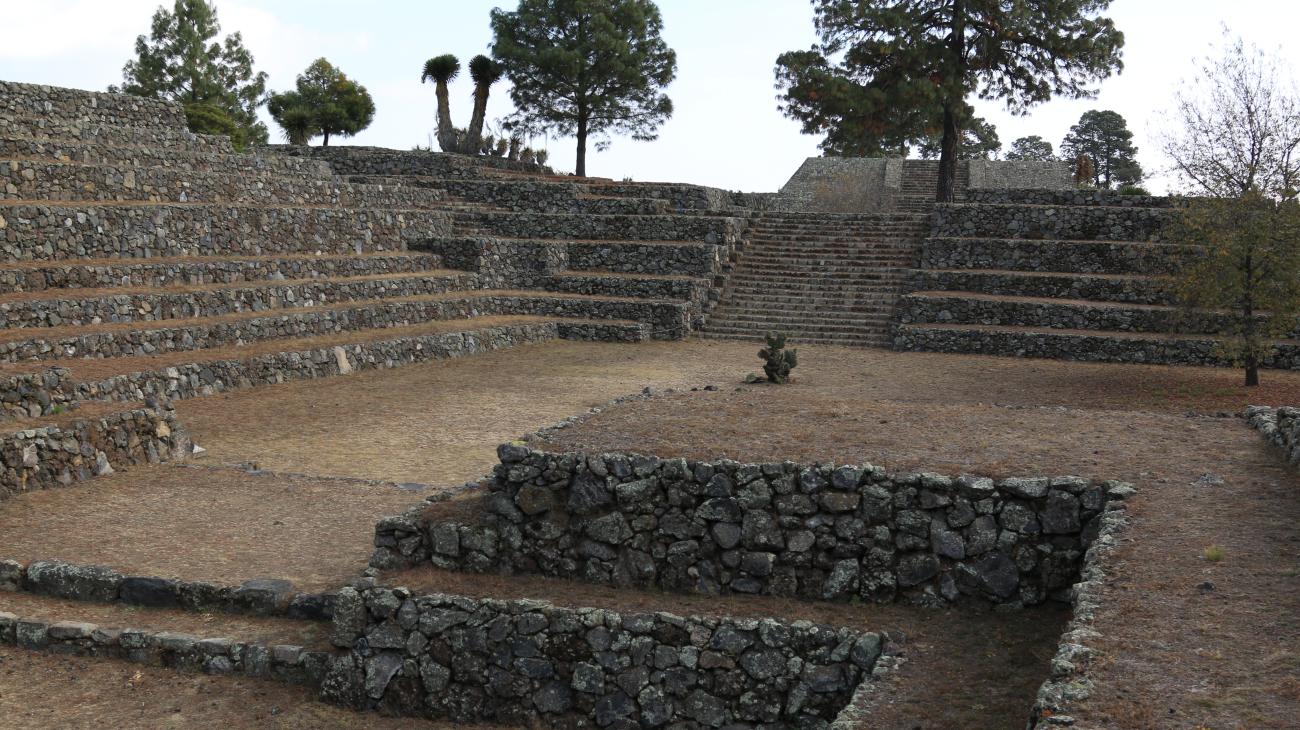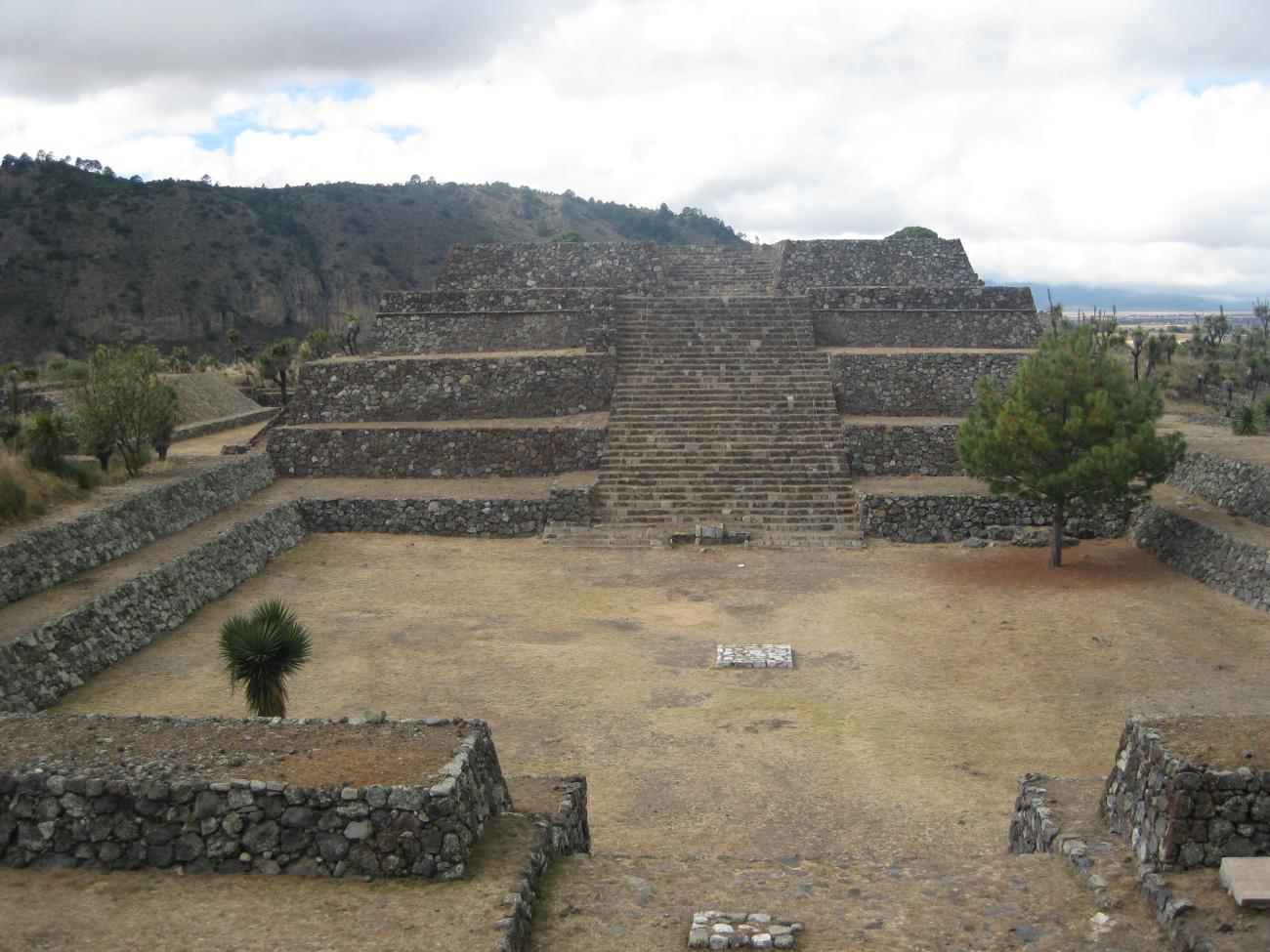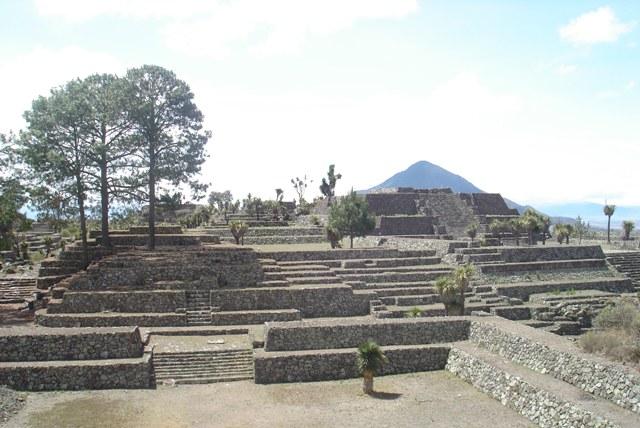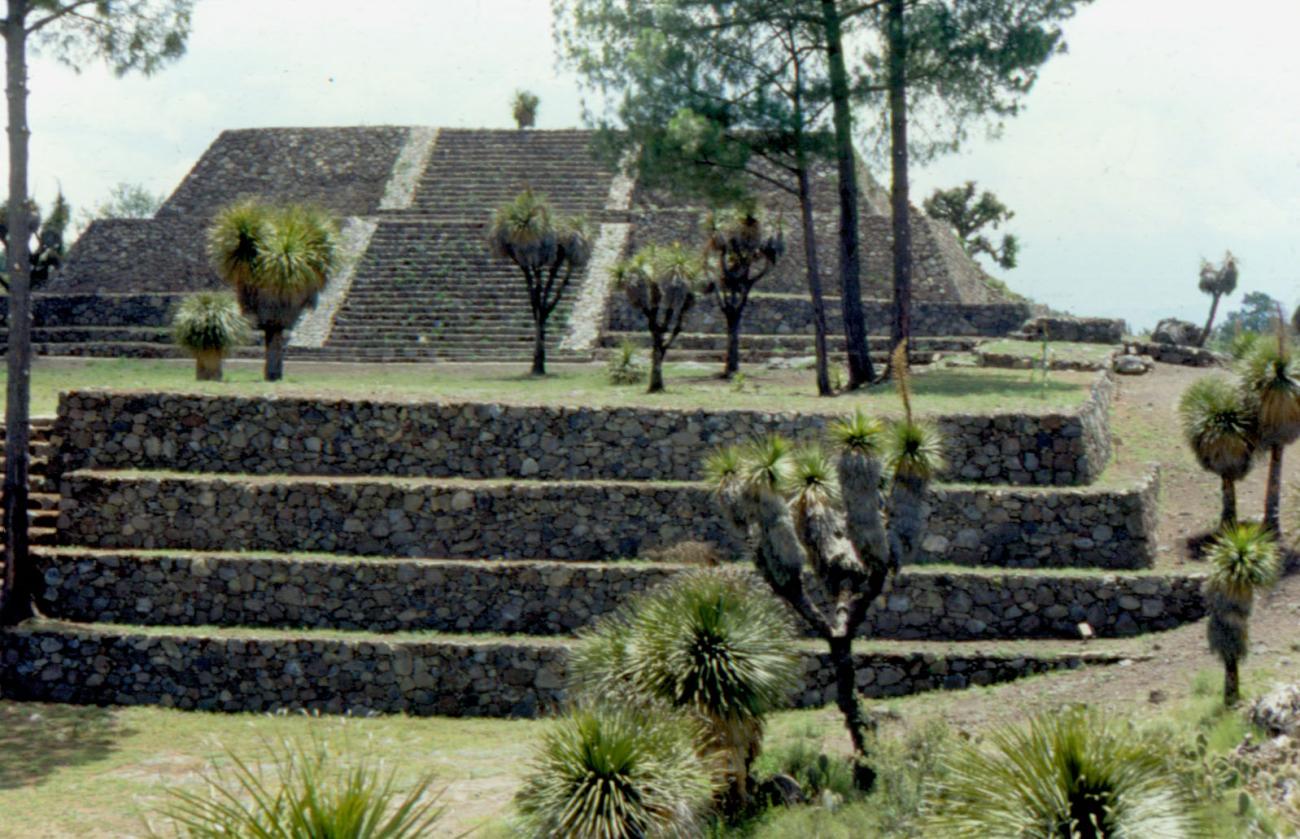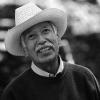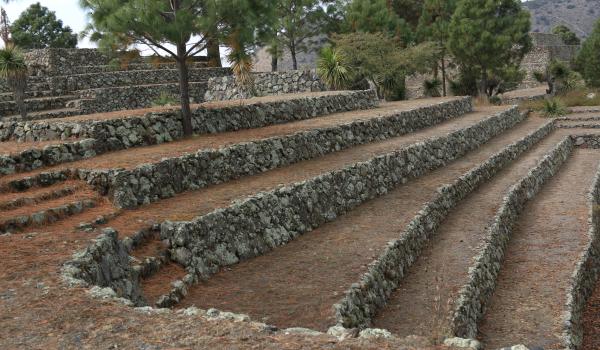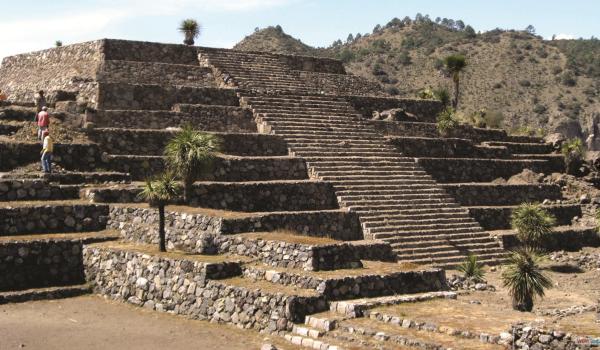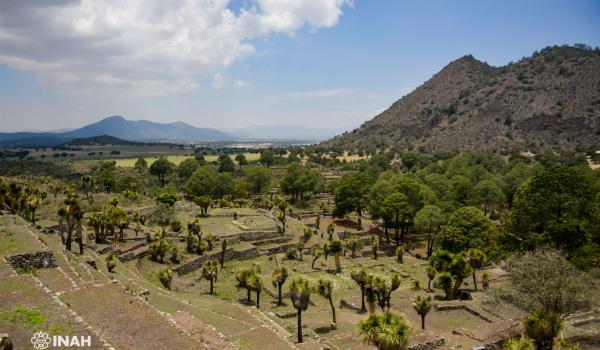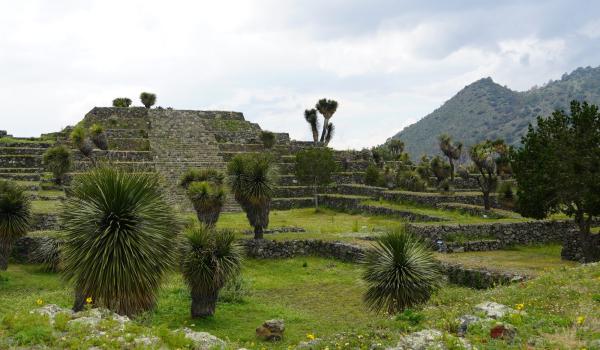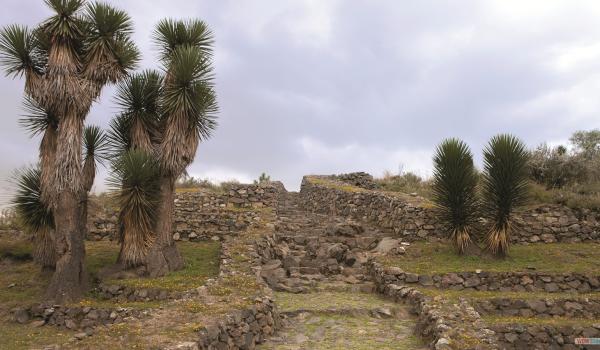Although this ancient metropolis stands upon a malpaís (an arid lava field with an uneven surface), its population inhabited it in residential units surrounded by periphery walls. We have found at least 2,700 residential units in the southern part (the most closely studied), and calculate that it had approximately 7,500 at its time of greatest occupation, when just over 90,000 people lived here. The presence of 27 or more Mesoamerican ballgame courts gave it unusual significance. Its cultural height came between 350 BC and 550 AD. After 600 AD, its population grew significantly, and in this time (until 900 AD) it was the largest and most important city on the Central Mexican Plateau.
The inhabitants of Cantona traded in artifacts made of obsidian which they obtained from the Oyameles-Zaragoza deposits a mere six miles northeast of the city. The state controlled production to ensure the exchange of goods and products required. In one area, we have found just over 350 official workshops.
Cantona is not mentioned in the historical sources, as it was abandoned approximately 500 years before the Spanish colonists arrived. Today, the southern part of the city has been explored and restored. This covers a large portion of the main civic and religious center, some streets, closed plazas with pyramids and six ballcourts, as well as residential units for both the elite and general population. Especially worth visiting are the Eastern Plaza or Mirador Pyramid, from which a large part of the south of the city can be seen, as are the state workshops, the Ballcourt 7 Complex and neighboring architectural complexes, as well as the Ballcourt 5 Complex, from which we can see the western side of the Acropolis. It is also recommended to visit the residential units surrounded by periphery walls, to examine the plinths upon which the houses were built and the comfort in which their inhabitants lived.



